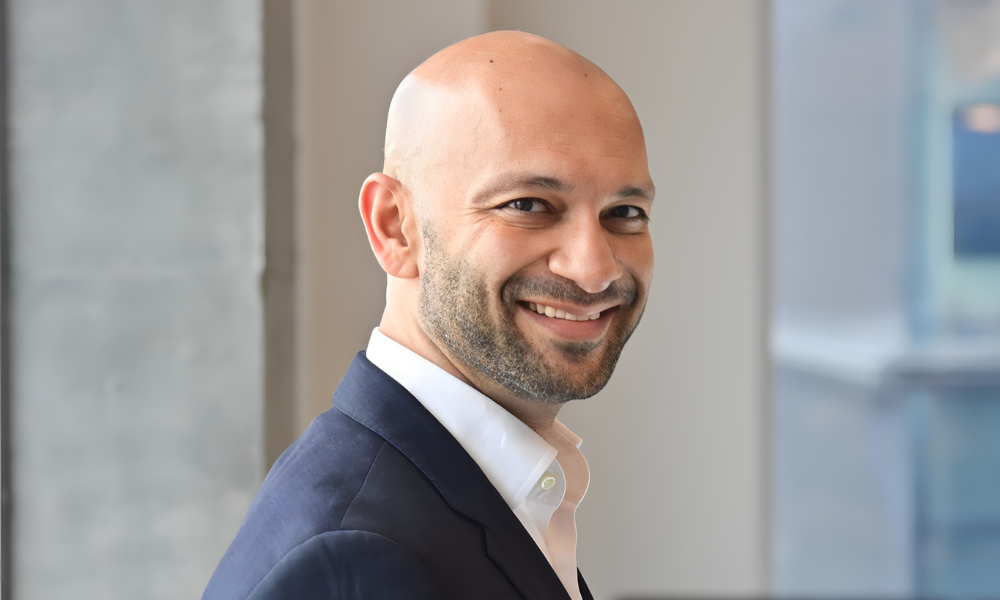
'AI will continue to evolve, amplifying HR’s ability to drive innovation, performance and engagement,' says Alim Dhanji of TD Synnex

How much of the HR function can AI actually automate? That’s the big question on the minds of CEOs and practitioners across the board.
According to research from Deel and YouGov, 46% of HR leaders say AI has boosted their analytics, 35% say it’s elevated L&D, 32% admit to using AI in performance management, and 28% use it for employee onboarding.
But can AI replace the human in human resources? And, more importantly, what can AI definitely not be used to automate?
One company looking to challenge the benefits and pitfalls of AI head on is global software giant TD Synnex. With over 23,000 employees across 100 countries, it has a combined revenue of $59.8 billion.
Digitalization and pursuing new lines of innovative tools sits at the heart of TD Synnex’s people and practice strategy – especially where AI is concerned. Speaking to HRD, Alim Dhanji, chief people officer at TD Synnex and former president of adidas Canada, says that AI is fundamentally changing the HR function by enabling teams to automate administrative tasks and focus on strategic contributions.
“It’s enhanced our ability to predict trends, personalize employee experiences, and streamline processes. For example, AI tools help uncover actionable insights from recruitment, performance, and engagement data, driving smarter decision-making and aligning talent strategies with business goals,” he says.
“Looking ahead, AI will become even more integrated, with generative AI making learning experiences immersive and predictive analytics anticipating workforce challenges. I believe this is just the start—AI will continue to evolve, amplifying HR’s ability to drive innovation, performance, and engagement.”
And the data certainly chimes with Dhanji’s sentiments. In research from SHRM, 65% of HR leaders are using AI to generate job specs, 42% are using it to customize job adverts and 33% are using the tech to screen job applicant resumes – all of which means HR leaders can use their time in more productive ways.
For Dhanji, at least, he’s seeing HR leaders approaching AI with a mix of caution and curiosity.
“While concerns about ethics, bias, and data privacy are valid, there’s growing excitement about the opportunities AI creates to elevate HR’s impact,” he told HRD. “Increasingly, HR leaders are recognizing that embracing AI is essential to remain competitive.”
TD Synnex is encouraging experimentation, he says. For example, a recent AI for HR Hackathon brought together over 400 HR professionals from 50 countries, “giving them the opportunity to explore AI’s potential and propose use cases to improve efficiency, enhance the employee experience, and elevate program effectiveness.”
And while AI is something of a holy grail in the HR space right now, it’s certainly not the panacea for the sector’s challenges. There are clear limitations to what AI can and cannot be used for – specifically with regards to data protection and privacy.
Reports from ONS found that the most common ways in which AI could negatively affect adults' lives were:
“AI is an enabler, but it cannot replicate the human aspects of HR,” added Dhanji. “Judgment, empathy, and understanding context are areas where AI falls short. For instance, while AI can analyse data to identify high-potential candidates, it can’t assess cultural fit or leadership potential during nuanced conversations.”
Similarly, AI cannot replace the emotional intelligence needed to resolve conflicts, coach employees, or navigate sensitive situations, he says.
“These moments of connection and understanding are central to effective HR and will always require a human touch. AI enhances our work, but it cannot replace the humanity that defines HR. At the same time, we should consider that AI continues to evolve - we don’t fully know it’s potential.”
TD Synnex is in the early stages of AI adoption – namely, experimenting with the tech across several HR functions.
In talent acquisition, they use AI to write inclusive job descriptions, and in learning and development, AI is personalizing learning journeys and curating resources for specialized skills. The company is also using AI-driven employee listening tools to analyse sentiment from surveys and feedback.
“Our goal is always to use AI as an enhancer, augmenting decision-making and improving outcomes, rather than replacing the human element,” says Dhanji.
As for the future, it’s hard to imagine a world in which AI and HR aren’t fundamentally intertwined. So much so that for Dhanji believes by 2030, AI will be deeply embedded in HR, automating transactional tasks and enabling HR professionals to focus on higher-value activities like performance consulting,
“HR will be predictive, using AI to anticipate workforce trends, skills gaps, and employee needs, positioning HR as a strategic driver of organizational success,” he added.
“However, the human element will remain central. Ethical AI governance will become a key capability, ensuring AI is deployed responsibly and inclusively. It’s exciting to consider that HR leaders of 2030 will seamlessly combine technological fluency with human-centric leadership, creating workplaces that thrive on innovation and connection.”